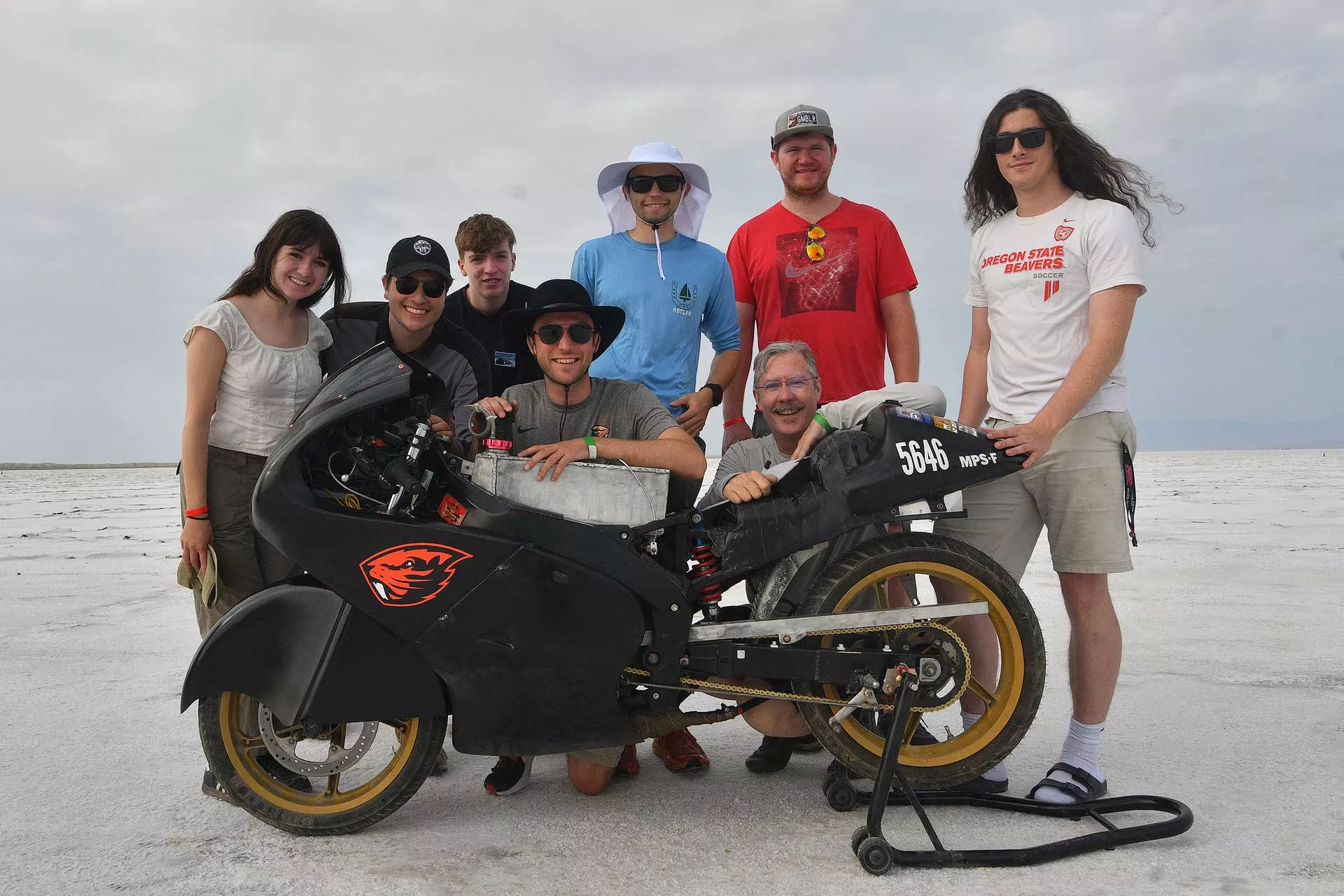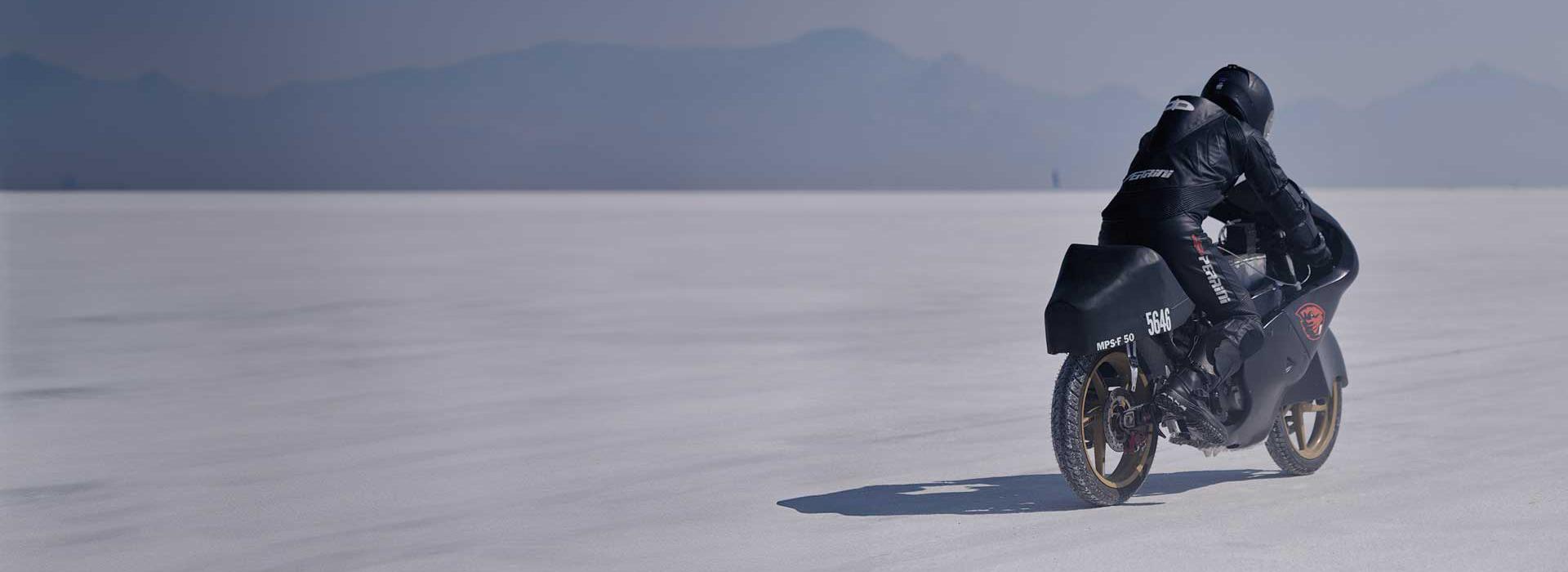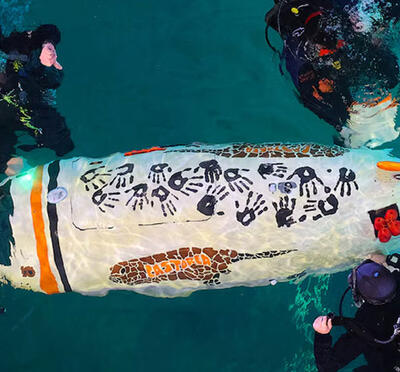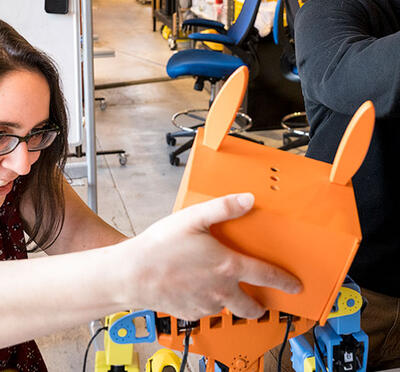In August, with the congratulatory cheers of June’s Commencement celebrations still ringing in their ears, a group of five 2024 College of Engineering graduates took their senior capstone project on an epic, two-week road trip.
The team — Kameron Coryell, Connor Heath, Dylan Varga, Ethan Wickman, and Tanner Windom — towed their optimized Aprilia 50cc motorcycle some 800 miles to the Bonneville Salt Flats, a 40-square-mile expanse of high-altitude desert in northwestern Utah. Their mission: to break a 21-year-old land speed record at Speed Week 2024, a national competition sponsored by the Southern California Timing Association.
The team had already set one record, back in May at El Mirage, a dry lakebed in the Mojave Desert. There, they clocked 87.766 mph, dusting that locale’s previous record of 70 mph for their vehicle class. (The team’s bike, modified to burn methanol, a renewable biofuel, is measured against other 50cc bikes using alternative fuels.)
Accompanying the team on both trips to pilot the bike on its speed runs was capstone instructor John Greeven, who came to Oregon State after a long and productive engineering career with HP. A lifetime motorsports enthusiast, Greeven had originally bought the team’s bike to work on with his son, and the two of them had been to Bonneville previously.
Through that experience, Greeven saw the potential for an engineering project that could spark excitement and engagement in his students. So, he initiated the Oregon State 50cc Land Speed Racing team, donated his own bike to the effort, and designed a capstone sequence around optimizing it for competition.
A year in the making
Bonneville was the culmination of a more than a year’s effort, beginning in June 2023. Mechanical engineering students were responsible for enhancing the bike’s aerodynamic performance with custom-built bodywork. They created a 3D scan of the bike and designed a new skin and fairings with CAD software. Setting up shop in a hangar at the Corvallis airport, they used a homemade CNC to carve out molds for the new parts in layers, from sheets of ordinary pink rigid-foam insulation material.

After the new parts were cast in fiberglass resin, the bike underwent months of rigorous testing. This was a painstaking, iterative process, in which the team sought to change only one element at a time to see how it would impact performance. Computer science students took on the project’s electronics challenges, deploying sensors for temperature, engine revolutions per minute, and wheel speed, and creating mechanisms to collect data.
In keeping with the College of Engineering’s goal to build transdisciplinary capstone teams, Greeven recruited students from the colleges of Business and Liberal Arts to join the team effort. Two upper-level classes, about 40 students in all, participated. The business students created a plan to recruit corporate sponsorships, and the liberal arts students focused on developing the team’s social media presence.
“This is how it works in the real world,” Greeven said. “When you’re working on a project, you need to find people with all kinds of different perspectives, different backgrounds, and different talents, to make it work.”
A test of endurance
Bonneville Speed Week is a seven-day endurance test for participants. The hard-packed salt pan provides an ideal proving ground for all kinds of vehicles. Winds are unpredictable and inconsistent. And as the day wears on, soaring temperatures — bringing with them a corresponding drop in air density — cause horsepower to falter.
“It’s difficult to prepare and tune your vehicle to maximize performance for the specific conditions affecting each timed speed run,” Greeven said.
The Oregon State team encountered their first hitch upon check-in, when their bike fell afoul of a new safety rule: Its fuel shutoff needed to be accessible from a normal, seated riding position, without the rider removing their hands from the handlebars.
The capable engineers quickly devised a perfectly workable, if not wholly elegant, solution: employing a generic lawnmower choke cable, affixed to the bike with zip-ties. The parts they needed could easily be found at any big-box home improvement store. So, a couple of team members scrambled to Salt Lake City, a mere 150 miles away.
After clearing that hurdle, the team spent its first four days at Bonneville methodically adjusting and tuning the bike, dialing in optimal fuel mixtures and tire pressures, all with the aim of increasing its top speed. To qualify for the course record, the team would need to achieve an average speed greater than the previous top speed of 83.981 mph over a distance of 1 mile. And then, to make it official under SCTA rules, they would have to do it a second time.
On Day 5, the team averaged 86.204 mph on Mile 2 and 86.636 mph on Mile 3. The team now faced just one final formality: clearing impound, in which the bike is locked away overnight before undergoing a thorough inspection by SCTA officials.
Lucky No. 11

The next morning, the team hit another snag. Inspectors discovered that the tail fairing of the motorcycle extended just beyond the back edge of the bike’s rear tire, by a distance of less than 2 cm. This took the bike out of compliance with SCTA specifications.
“We realized, in that moment, that changes we had made to the bike’s gearing and chain length had moved the rear wheel forward,” Greeven said. “It was clearly a violation of the rules. The team was devastated. But then somebody said, ‘Let’s get in line and do it again!’ So, that’s what we did.”
The team would have to make another run during the hottest part of the day, when their motorcycle was noticeably slower. With no time to waste, they quickly installed a new tail fairing. And, just to make sure it had no chance of moving out of position, they redundantly wired it in place.
On Day 6, the team’s first run was completed around noon, as temperatures were already creeping into the 90s. Their speed in Mile 2 fell just short of the standing record, but in Mile 3 they averaged 84.608 mph. They had qualified, but only just barely, by a margin of 0.627 mph.
After a restless night, the Oregon State team members were among the first to hit the salt on the final day of Speed Week. They were relieved to learn that their bike had cleared impound, but they would still need to confirm their record. They would have just one more opportunity, and this time, only their time in the Mile 3 segment would count.
That run would prove to be the team’s lucky No. 11.
“The Aprilia ran flawlessly up through the gears, hitting sixth gear and continuing to rev higher though Mile 2,” Greeven said. “I could tell from the tachometer that we were in record territory entering Mile 3, but would it hold?”
It held. The final run’s third-mile speed of 85.709 mph gave the team an average, over two critical runs, of 85.158 mph. The Bonneville record now belongs to Oregon State. But the team members took away something more from their time in the desert.
“This experience helped me to see what the true engineering experience was like,” said mechanical engineering student Tanner Windom. “Not the preplanned, no-bumps-in-the-road situations you see in school, but the turbulent, ever-changing experience you face constantly with real engineering problems.”
Support the team
The Oregon State Land Speed Racing team, organized by capstone instructor John Greeven, achieved a lot in its first year, capped off by record-breaking runs with its modified Aprilia 50cc motorcycle at El Mirage and the Bonneville Salt Flats. With all five student members of the team graduating in spring 2024, Greeven will be looking for a new group of students to join the team in the 2024-25 year to work on new challenges. He will also be looking for a way to support the team going forward.
“We have no funding, yet, for the incoming team, so we are at risk of having to cancel the project or convert it to something theoretical — on paper only,” Greeven said.
To donate to the team, visit: https://www.beavsgive.org/organizations/land-speed-racing



